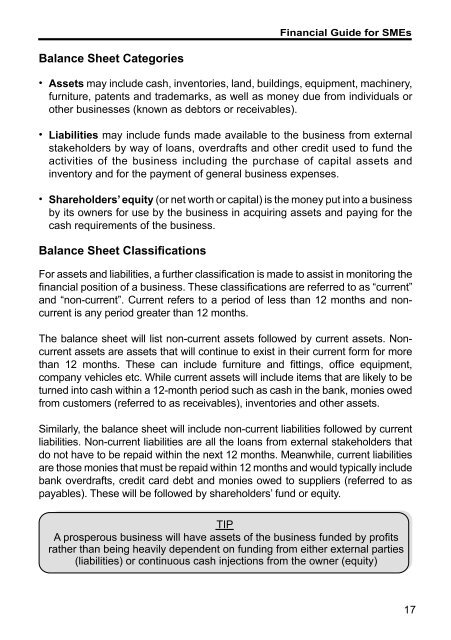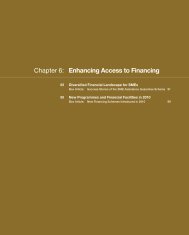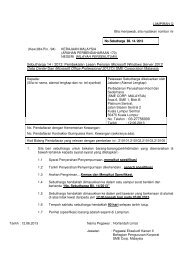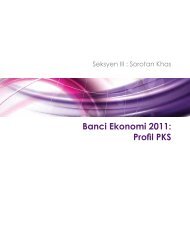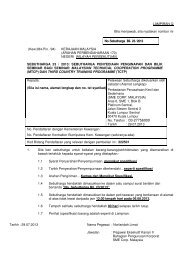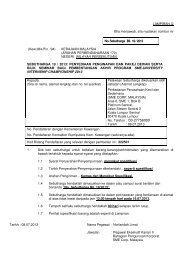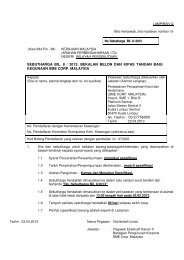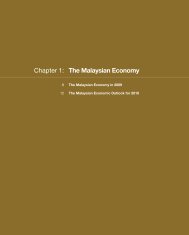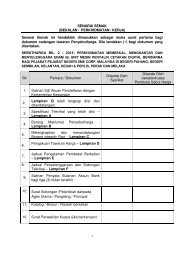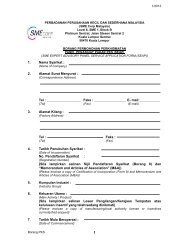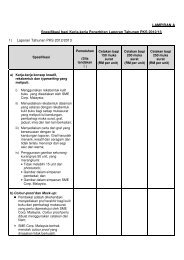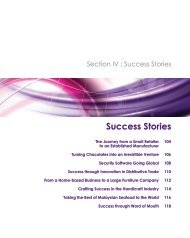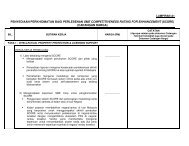Financial Guide for SMEs - SME Corporation Malaysia
Financial Guide for SMEs - SME Corporation Malaysia
Financial Guide for SMEs - SME Corporation Malaysia
Create successful ePaper yourself
Turn your PDF publications into a flip-book with our unique Google optimized e-Paper software.
<strong>Financial</strong> <strong>Guide</strong> <strong>for</strong> <strong><strong>SME</strong>s</strong>Balance Sheet Categories• Assets may include cash, inventories, land, buildings, equipment, machinery,furniture, patents and trademarks, as well as money due from individuals orother businesses (known as debtors or receivables).• Liabilities may include funds made available to the business from externalstakeholders by way of loans, overdrafts and other credit used to fund theactivities of the business including the purchase of capital assets andinventory and <strong>for</strong> the payment of general business expenses.• Shareholders’ equity (or net worth or capital) is the money put into a businessby its owners <strong>for</strong> use by the business in acquiring assets and paying <strong>for</strong> thecash requirements of the business.Balance Sheet ClassificationsFor assets and liabilities, a further classification is made to assist in monitoring thefi nancial position of a business. These classifi cations are referred to as “current”and “non-current”. Current refers to a period of less than 12 months and noncurrentis any period greater than 12 months.The balance sheet will list non-current assets followed by current assets. Noncurrentassets are assets that will continue to exist in their current <strong>for</strong>m <strong>for</strong> morethan 12 months. These can include furniture and fittings, office equipment,company vehicles etc. While current assets will include items that are likely to beturned into cash within a 12-month period such as cash in the bank, monies owedfrom customers (referred to as receivables), inventories and other assets.Similarly, the balance sheet will include non-current liabilities followed by currentliabilities. Non-current liabilities are all the loans from external stakeholders thatdo not have to be repaid within the next 12 months. Meanwhile, current liabilitiesare those monies that must be repaid within 12 months and would typically includebank overdrafts, credit card debt and monies owed to suppliers (referred to aspayables). These will be followed by shareholders’ fund or equity.TIPA prosperous business will have assets of the business funded by profi tsrather than being heavily dependent on funding from either external parties(liabilities) or continuous cash injections from the owner (equity)17chapter 1 01-21 Eng.indd 178/15/11 5:01:24 PM


